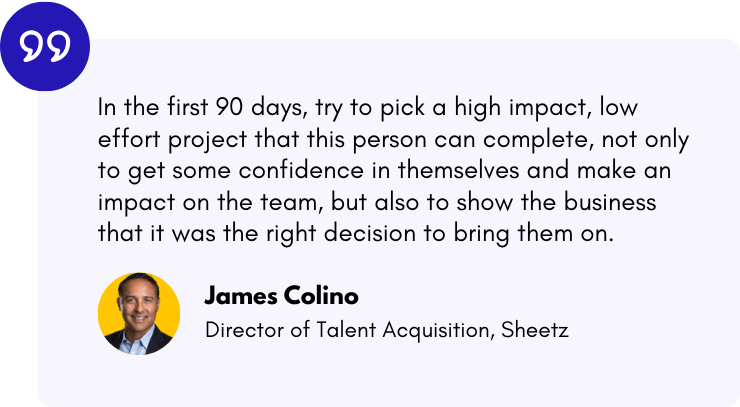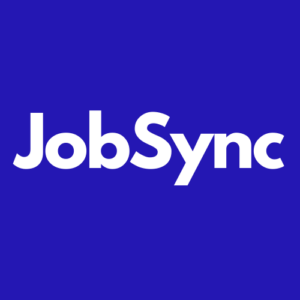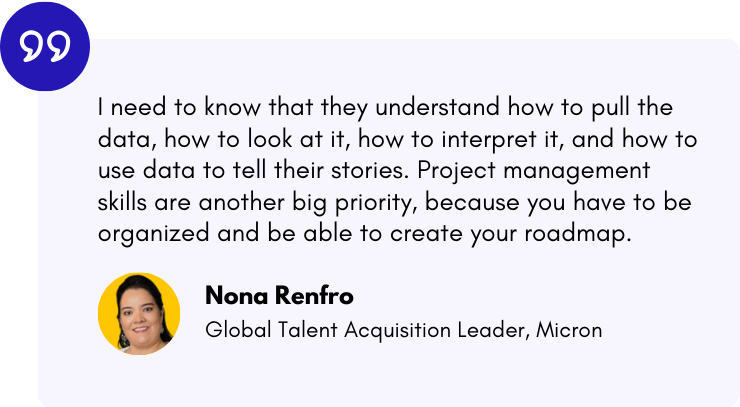As organizations increasingly recognize the value of Hiring Operations (Hiring Ops), they face a crucial decision: who should lead these vital efforts? This strategic choice goes beyond simply filling a position – it requires careful consideration of the skills, experience, and leadership qualities needed to build and sustain an effective hiring infrastructure.
Whether you’re scaling your talent acquisition function or establishing Hiring Ops for the first time, finding the right person to spearhead these initiatives can make the difference between transformation and stagnation.
Just getting started? Learn more about optimizing your talent acquisition tools and processes here.
Below, we explore expert insights on selecting, hiring, and onboarding the ideal Hiring Ops leader, drawing from the experiences of seasoned professionals in the field.
When the business gives a green light to your Hiring Ops proposal, the critical task of choosing the right person to lead these efforts begins:
- Should you look for a seasoned TA professional who lacks Hiring Ops experience, or an operations expert unfamiliar with recruiting?
- Should you bring in a consultant, make an external hire, or promote someone from within?
- Do specific roles already exist, and should they move under the Hiring Ops function?
For James Colino, Director of Talent Acquisition at Sheetz, the answer to these questions depends on the organization’s size, situation, and strategy. As a starting point, he recommends building a network of internal partners and resources to support the journey and then determining what skills are missing and, therefore, need to be hired. Ideally, the Head of Talent Acquisition would set the strategy and “then bring on someone at the senior specialist level to do the tactical work and build the credibility of the function to show some results,” he says.
Nona Renfro, Global Talent Acquisition and Operations Leader and Founder of IC2 Talent Acquisition Solutions echoes this sentiment: “There might be people from the HRIS operations team that have an operational background and an interest in the role. But if you’re in a small company and there isn’t that talent, you’ll need to hire someone who can come in and hit the ground running with that operational rigor, experience, and analytics mindset and then, over time, build the team out. But the TA leader will define that strategy and what works best for the size of the organization that they have.”
Hire for skills, not background
For both Renfro and Colino, having an Ops or recruiting background is less important than the skills a candidate brings to the table—the most important of which are data analysis and project management skills.
To that point: Discover how to measure and maximize your human capital ROI.
“I need to know that they understand how to pull the data, how to look at it, how to interpret it, and how to use data to tell their stories,” Renfro says. “Project management skills are another big priority because you have to be organized and be able to create your roadmap.”
Some of the other typical skills, experiences, and requirements include:
- Good communication, collaboration, and relationship-building within HR, across other business functions, and with vendors.
- Exceptional change management abilities.
- Self-directed problem-solving.
- Experience leading continuous improvement projects to drive operational excellence.
- Managing competing priorities.
- Coaching and development skills.
Onboard them for success
With any new job, the most common challenge within the first 90 days is the race to deliver some type of ROI and prove that the new hire can walk their talk. No Ops professional wants to feel like they’re an overhead or like the business is waiting for them to prove that they’re worth their salary.
For Renfro, “two ears, one mouth” is the first rule of engagement. “I want [the new hire] to go in and evaluate everything, get into the systems, do one-on-ones with the recruiting team, and meet with the partners to understand a day in the life of a recruiter. In the first 30-60 days, that person has to jump in and learn what’s working well and what’s not, and then ask, ‘How do we solve for gaps? How do we prepare to change something and the timelines?’ That listening tour is really important.”
She recommends having a specific onboarding plan that lays out who the new hire will meet with and what the expectations are for these early days. “There are a lot of introductions that have to happen and a lot of teams to be introduced to. You need to pave the way for them as well, so other teams don’t feel like, ‘What are you doing here? You’re poaching on my space.’”
Colino provides the second rule of engagement: find the quick wins. “In the first 90 days, try to pick a high impact, low effort project that this person can complete, not only to get some confidence in themselves and make an impact on the team but also to show the business that it was the right decision to bring them on.”
Jeremy Lyons, thought leader and founder of the RecOps Collective, says—uniquely with Hiring Ops—both rules of engagement start in the interview. “When the RecOps person is interviewing, that’s where their first 90 days can start. They’re going to see things in the process, how things moved, how things were articulated, and that they can immediately come in and say, ‘Hey, you guys did XYZ really well, but here are some areas of improvement. Most RecOps people, when they start interviewing, are already thinking, ‘We know the game that’s being played. So now, where can we make changes to innovate things quickly?”

The journey to establishing a successful Hiring Operations function requires careful planning, strategic thinking, and a compelling business case. While the path may seem challenging, the potential benefits—from improved efficiency and compliance to better candidate experiences and recruiting outcomes—make it a worthwhile investment for organizations ready to transform their talent acquisition approach.
Whether you’re facing disconnected recruiting goals, compliance challenges, or the need to scale rapidly, the key is to start with a clear understanding of your organization’s unique needs and build your case from there.
This article is excerpted from “Bringing Hiring Operations to Life in Your Organization: How to get buy-in, secure funding, and navigate your first operations hire,” a comprehensive guide that explores the full spectrum of establishing and scaling Hiring Operations. For more detailed insights on identifying the right timing, building consensus, securing executive buy-in, and setting your Hiring Ops leader up for success, download the complete white paper today.



